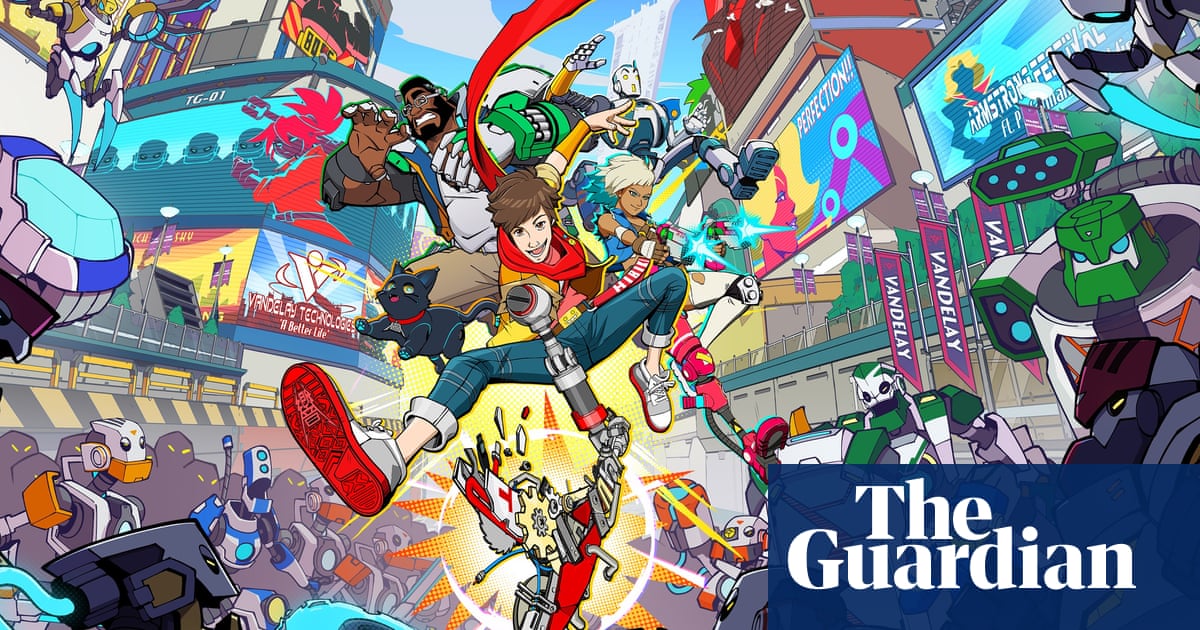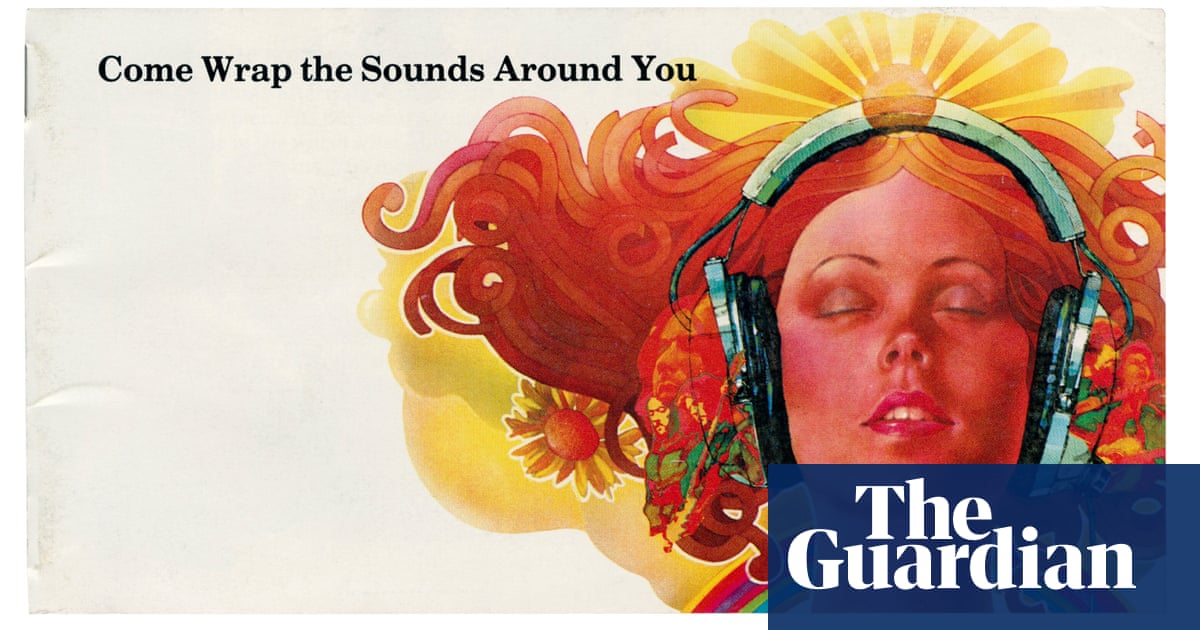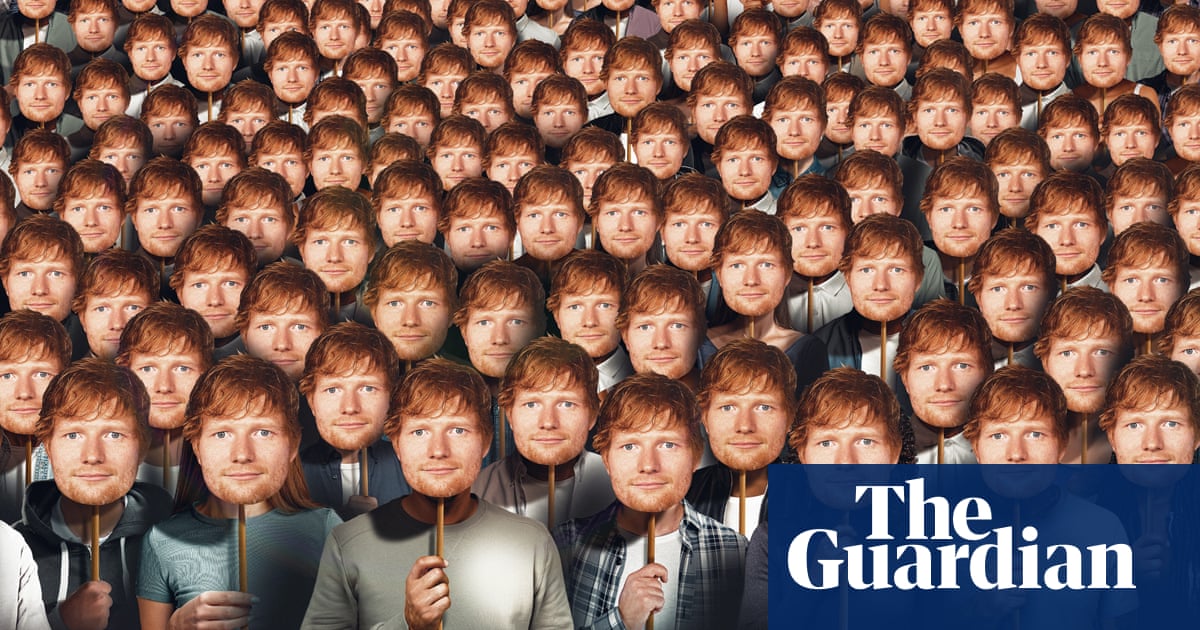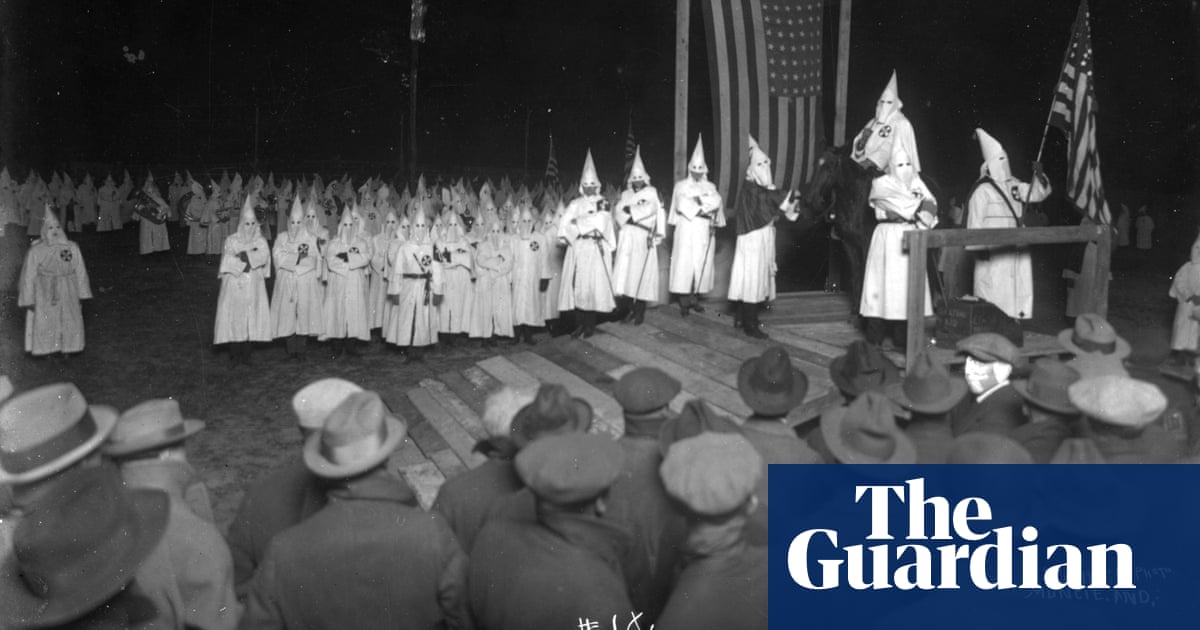
Has anyone ever told you that you lack rhythm? Have you ever belched out a flat note at karaoke and seen the room visibly deflate in front of you? Ever picked up a guitar to show off to your crush, only to fluff the fingering and mangle that lovely, romantic chord? Were you once at least somewhat musically accomplished, but now realising that you are not the young, cool alt-rocker you used to be, but a middle-aged 6 Music dad with lactose intolerance and a mortgage to worry about?
Sometimes, you need to just pretend you’re a leather-jacketed rebel with a cocky smirk and knees that don’t pop every time you hunker down. And there’s no better place for that than a video game. Guitar Hero brought the rockstar fantasy to millions. The Artful Escape casts you as the son of a folk musician trying to make your own way playing operatic sci-fi prog rock. And then there’s this year’s Hi-Fi Rush, which puts all of its hyperactive-labrador energy into making sure you feel like a bona fide rockstar.
This unlikely rhythm action game was surprise released on Xbox Game Pass by the renowned horror studio Tango Gameworks earlier this year. It stars a deeply uncool and talentless young dude transformed into a rock god, and the game wants to have the same effect on you. “Not only is the game a love letter to music (especially the rock genre and the idea of a rockstar in general), it’s also a way for players who are not musicians to experience the sort of ‘performance high’ that one would get by playing music live,” explains director John Johanas.
It doesn’t play like the rhythm games that dominated back in the 00s, such as Guitar Hero or Rock Band, but more like an action game – closer to Devil May Cry than DJ Hero. You land your attacks and combos on the beat, using a cobbled-together scrap-metal guitar as a weapon. “While the gameplay is nothing like playing guitar or being in a band, the visceral feel of your attacks landing to the beat … to me it’s a sideways take on what it feels to be in that trance state where you are one with the music,” says Johanes.
He’s right. You’ll notice when you play that the entire world pulses in rhythm with the music. Want to jump further? Do it on the beat. Want to finish off your combo by slamming a guitar into the ground and making shockwaves? Play a full bar, and hit every note in time. Want to pop off some cool shots in between melee attacks? You better learn how to work with a syncopated beat, then.
It sounds tough, but thanks to the living world nodding along to the beat with you – whether it’s trees swaying or factory machinery juddering into life in 4/4 time – there’s enough going on to guide even the beat-deaf into rockstar territory. But making the world match the music, and vice versa, was a technical and creative challenge.
“It’s not an exaggeration to say that this game was driven by music, since at even a programming level,” laughs audio director and composer Shuichi Kobori. “When I made demos for the songs, I would construct them with their ups and downs of intensity, in line with a visual document provided by the director for the level they would be used in. Since the progression of the level and the progression of the music are intrinsically tied, I had to match the arrangement with the stage layout or gimmicks in the stage, constantly adding or adjusting sections … There were times where we specifically wanted to match something in the game to a phrase or riff from the music, so I had to channel a rhythm game mentality and arrange the song while playing the game to think of something that would match.”
The result is an artisanal audiovisual fusion, music and game design working in harmony. When the controls are wrested away from you for a story scene, the musical engine keeps purring. “For the cutscenes, the music needed to be seamlessly integrated without a pause to keep the tempo,” explains Kobori. “For that there was a lot of trial and error in making sure that the song would connect appropriately.”
The developers concocted a tool called Inst FX, which delivers a suite of musical sound effects when the player or enemies attack and connect their hit. “We had to make it feel like what the player did, or the enemies were doing, added to the song to create a sort of unique jam session,” says Kobori. “This was a key component of the enjoyability of the game.” So, even if you whiff an attack and come in before the chorus, so to speak, you’re adding something to the sonic landscape – but it might be more cutting room floor material than it is lead single.
The game’s own original soundtrack is a vibrant, joyful mix of alt-rock and electronic fuzz that lands somewhere between Refused and indie sleaze – but the licensed tracks are a headline draw. Fronted by Nine Inch Nails and the Black Keys, the tracklist reads more like a rock festival poster than a video game collaboration. But that was always the intent. “It was a personal one for me,” smiles Johanes. “Showing off the music you listened to growing up is almost like reading from your diary. I think going with personal taste rather than curating for an audience has a charm of its own.
But how would the director’s teenage mixtape mesh with the composer’s work? Johanes had it figured out from the start. “I gave direction that the original music should feel like a backing band, with Chai [the player character] as the lead in the song, making it their song. Specifically, with how they fight and the added flair that they add to the track by fighting to the music. In a way, the player drives the soundtrack.” The boss battles, meanwhile, are more like guitar battles, with you trading riffs and playing against the boss’s signature track (for instance, 1,000,000 by NIN).
Hi-Fi Rush’s licensed tracks are deployed strategically, like slotting a well-practised, punchy cover into the middle of your set. In-game, the effect is euphoric – you get lost in the beat, hammering away combos to the beat, listening to the grit of Trent Reznor’s voice and the growl of the distorted guitars as you dodge, jump, hit, slide and grin.
Tango Gameworks designed this game to be fun, but it’s more than that – for its developers, it’s an expression of the rockstar fantasy, delighting in music while toying with all the rules that make it work. Its grungy reinterpretation of the rhythm game for 2023 has been one of the year’s best surprises.












